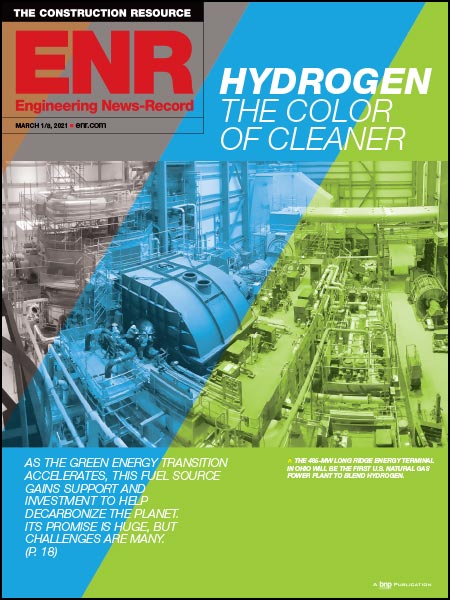
For some construction projects—such as public paving work—the cost of fuel and freight is often tied to a price index. So, a drop in petroleum prices of 50% or more is neither good news nor bad news for contractors.
For others, the news is seen as a mixed blessing. Prices inched up in February, but they still remain far lower than last year's levels. If low fuel prices continue, some experts predict, they will create an economic stimulus that will give consumers more cash—and, eventually, more money to find its way into new construction.
All this remains to be seen, though. Shale output has slowed, and after roughly 10 straight months of price declines, diesel fuel prices in February inched up 3.2% higher than January's but were still 41% lower than a year ago, according to the Producer Price Index. Diesel prices at the pump averaged $2.92 across the U.S. in mid-March, down 27% compared to a year ago, after falling to $2.83 in early February—its lowest since January 2010, according to the Energy Dept.
Falling prices already have produced mixed effects. Firms working in the oil patch have seen drilling put on hold and equipment idled, while some refinery upgrades have continued as planned. Estimating is a bigger challenge, too. "We just a got a six-year job where we estimated $4-a-gallon gas," says Thad Pirtle, vice president of equipment for Evansville, Ind.-based Traylor Bros. "It's really a throw of the dice."
Fleet managers say projects are certainly spending less on fuel but add that the drop in prices has hindered their ability to make strategic investments. Firms investing in alternative fuels, such as electric, propane and compressed- natural-gas vehicles, say they likely will take a break from these purchases this year as the drop in petroleum-oil prices now makes for a longer payback period.
"It gives us pause," admits Marty Ozinga IV, president of Chicago-area concrete supplier Ozinga Bros. Inc. It operates four CNG filling stations and about 150 vehicles that run on CNG. "There is some general replacement of equipment that we are doing this year with diesel," Ozinga says. "The low prices on diesel and oil are definitely part of the decision."
Alternative-fuel experts say oil prices may be back on the rise. "I think we will see sales pick up next year as soon as oil prices start to increase," said Stephe Yborra, director of market development for natural-gas group NGV America at the Green Truck Summit, held in early March in Indianapolis. "Don't fall off the train," he urged fleet managers.
Even with the sharp downturn in oil prices, the price spread between petroleum and alternative fuels is still favorable—though greatly diminished—compared to last year. According to the website CNGNow.com, the average per-gallon-equivalent price of CNG is $2.11, while diesel prices in the U.S. are expected to average $2.83 this year compared to $4 a gallon last year, EIA says. "We know it is going to go back up," Yborra said, referring to petroleum-based fuels such as diesel, which powers most construction machines. "We just don't know how quickly."
Meanwhile, companies say they are continuing to make investments that lower their overall fuel costs. Newer, clean-diesel engines in both on-road and off-road machinery are proving to be more fuel-efficient, and less-critical upgrades can further reduce operating costs, say fleet managers. On heavy-duty trucks, even the lights can make a difference. "The fuel savings of moving from incandescent high-energy lights to LEDs is real money," said Doyle Sumrall, managing director of the National Truck Equipment Association, at the Indianapolis summit. "It's almost like turning off your truck for an hour or two a day."
Cutting idle time is another industry focus, he added, noting that more firms are adopting technologies such as wireless telematics to help monitor their fuel usage. "Over 50% of the cost of fuel we use is from truck idling," echoes Ozinga.
Those who rely on equipment values to secure bonding or asset-backed loans may be concerned about a glut of idle machines in the oil patch, but appraisers are less worried. Machines in oil-producing regions are at risk, but only 6% to 8% of all rented heavy equipment is exposed to pure oil-and-gas work, according to appraisal firm Rouse Asset Services. Further, the oil-and-gas sector accounts for only 10% of all rental revenue, its analysts say.
"[If] all this were to be wiped out, you might have 6% to 10% of equipment come to market that has to find other projects or is going to be off-loaded in the used-equipment markets," explains Raffi Aharonian, managing director at Rouse. "The exposure is rather low."



